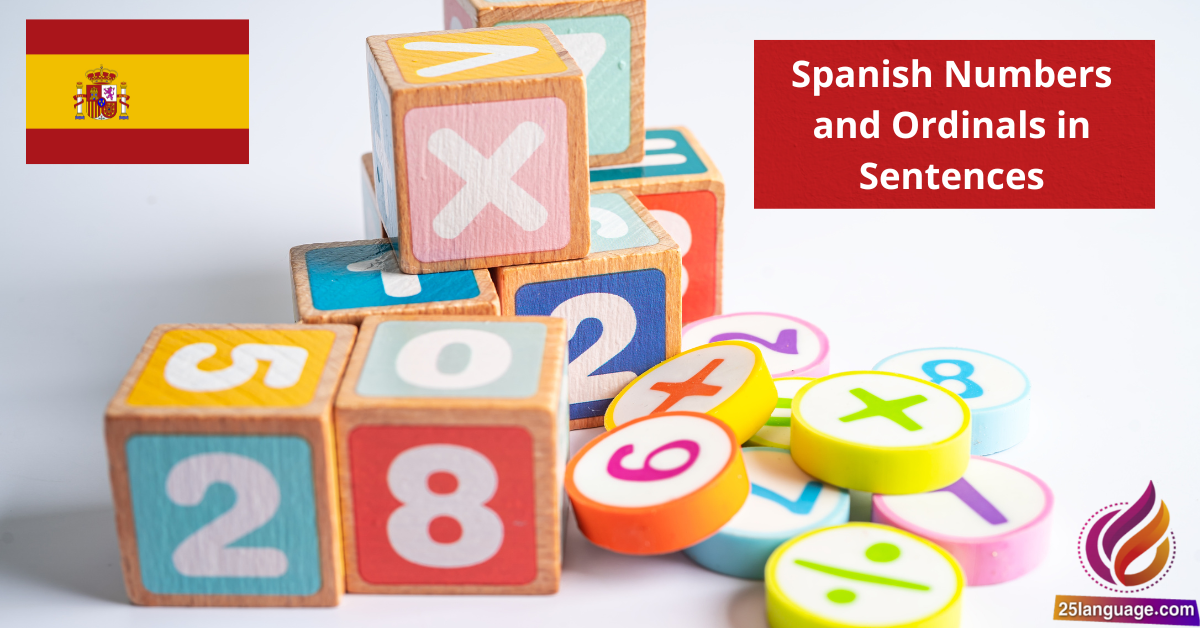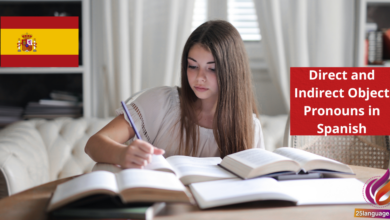Spanish Numbers and Ordinals in Sentences

Imagine being in a bustling market in Spain, where you want to buy three ripe tomatoes or ask how many people are in front of you in line. Understanding spanish numbers and ordinals is key to navigating everyday conversations and immersing yourself in the culture. In this lesson,you’ll discover how to use these essential elements in sentences,empowering you to communicate confidently and naturally in various situations. Let’s dive in!
Mastering Spanish Numbers and Ordinals in Context
Learning to master numbers and ordinals in Spanish involves understanding both their forms and their proper usage in context. The cardinal numbers in Spanish are essential for counting, identifying, and expressing quantities. The basic numbers include:
- uno (one)
- dos (two)
- tres (three)
- cuatro (four)
- cinco (five)
- seis (six)
- siete (seven)
- ocho (eight)
- nueve (nine)
- diez (ten)
Using these numbers, one can formulate practical sentences. For example, “Tengo cuatro manzanas” translates to “I have four apples.” As learners advance, they will encounter ordinal numbers such as primero (first), segundo (second), tercero (third), and so on, which are used to indicate the position of items in a sequence. As an example, “Ella es la primera en la fila” means “She is the first in line.” Note that ordinal numbers need to agree in gender and number with the noun they describe, e.g., “la segunda vez” (the second time – feminine) versus “el segundo libro” (the second book – masculine).
| Spanish | English | Usage Examples |
|---|---|---|
| uno | one | Tengo uno gato. (I have one cat.) |
| cuatro | four | Hay cuatro mesas. (There are four tables.) |
| primero | first | Es el primero de mayo.(It is the first of May.) |
| segundo | second | Ella llegó en segundo lugar. (She arrived in second place.) |
Building Sentences with Spanish Numbers and Ordinals
In Spanish, just like in English, numbers are fundamental for constructing sentences.the basic cardinal numbers from one to ten are uno, dos, tres, cuatro, cinco, seis, siete, ocho, nueve, and diez. These numbers can be combined with nouns to indicate quantity. For example,”tengo dos gatos” translates to “I have two cats.” When forming sentences, remember the gender and number agreement: “gatos” is plural and masculine, so “dos” remains unchanged. Additionally,larger numbers follow a similar pattern; for instance,”tengo cinco libros” means “I have five books,” where “libros” is also masculine plural,resulting in no alteration to “cinco.”
Ordinal numbers in Spanish,which indicate position or order,include primero (first),segundo (second),tercero (third),and so on. Unlike English, ordinal numbers must agree in gender and number with the nouns they describe. For example, “Es el primer coche” means “It is the first car,” whereas “Es la primera casa” means “It is the first house,” highlighting the masculinity of ‘coche’ and the femininity of ‘casa.’ Here are some essential points to consider when using ordinal numbers:
- Primero becomes primera when used with feminine nouns.
- In compound structures, like “quinto” (fifth), it remains unchanged but will always match the noun’s gender.
- In Spanish, it’s common to use ordinals in dates: “el cinco de mayo” for “May fifth.”
| Spanish Example | English Translation | Grammar Rule |
|---|---|---|
| tengo tres perros | I have three dogs | Cardinal number for quantity |
| Es la segunda vez | It is the second time | Ordinal number agrees with feminine noun |
| Es el cuarto libro | It is the fourth book | ordinal number agrees with masculine noun |
| El cinco de enero | The fifth of January | Ordinal in date |
Practical Applications of Spanish Numbers and Ordinals
Understanding Spanish numbers and ordinals is essential for everyday dialog and various practical situations. Numbers in Spanish are usually straightforward, following a pattern that can be easily memorized. The basic numbers from 0 to 20 are unique words, but from 21 onwards, they follow a more predictable format. Such as:
- 21 – veintiuno (twenty-one)
- 22 – veintidós (twenty-two)
- 30 – treinta (thirty)
- 31 – treinta y uno (thirty-one)
Additionally, when discussing quantities, such as when shopping or cooking, knowing how to manipulate these numbers becomes crucial.in practical scenarios, you might say “Necesito tres manzanas” (I need three apples) or “El libro cuesta veinte dólares” (The book costs twenty dollars).
Ordinals in Spanish indicate the position of something in a sequence, such as first, second, or third. These words agree in gender and number with the nouns they modify. The first five ordinal numbers are:
- 1st – primero/a (first)
- 2nd – segundo/a (second)
- 3rd – tercero/a (third)
- 4th – cuarto/a (fourth)
- 5th – quinto/a (fifth)
It’s important to note that “primero” and “tercero” drop the final “o” when used with masculine nouns, so you would say “el primer día” (the first day) and “el tercer libro” (the third book). In contrast,the feminine forms are used with feminine nouns: “la primera semana” (the first week) and “la tercera casa” (the third house).
unlocking the Power of Spanish Numerals in Communication
Understanding Spanish numerals is essential for effective communication, as they are used in various contexts such as telling time, shopping, or discussing dates.Spanish numerals can be categorized into two main types: cardinal numbers (used for counting) and ordinal numbers (used for ranking). Cardinal numbers include uno (one), dos (two), tres (three), and so on, while ordinal numbers include primer (first), segundo (second), tercero (third), etc. Here are some key points to remember:
- Cardinal numbers are used for quantity.
- Ordinal numbers are used to denote a position in a sequence.
- Numbers over 20 follow a specific pattern, such as veintiuno (twenty-one), veintidós (twenty-two).
When using numerals in sentences, it is indeed critically important to note the gender and number agreements with nouns. For example, when saying “two cats” in spanish, you would use dos gatos (where “gatos” is masculine), while “two cats” for a female cat group would be dos gatas. Additionally,ordinal numbers must agree in gender and number: la primera casa (the first house – feminine) vs. el primer coche (the first car – masculine). Here’s a simple table summarizing some key examples:
| Spanish Example | Type | English Translation |
|---|---|---|
| uno | Cardinal | one |
| primer | Ordinal | first |
| tres gatas | Cardinal (feminine) | three female cats |
| el cuarto coche | Ordinal (masculine) | the fourth car |
Future Outlook
¡Felicitaciones, estudiantes! Hemos llegado al final de nuestra lección sobre los números y los ordinales en español. Hoy hemos explorado cómo contar y ordenar de manera efectiva, dos habilidades fundamentales para comunicarse con confianza en este hermoso idioma.Hemos aprendido a utilizar los números del 1 al 100,así como los ordinales que nos permiten expresar posiciones y secuencias,como primero,segundo y tercero. Estas herramientas no solo son esenciales para realizar compras o dar direcciones, sino que también son claves para construir frases más complejas y enriquecer nuestras conversaciones.
Ahora que hemos desarrollado una base sólida en el uso de números y ordinales, te animamos a practicar. Intenta incorporarlos en tu vida diaria: cuenta los objetos que ves, utiliza ordinales al describir eventos y juega con ellos en la conversación. cuanto más los utilices, más natural se volverá su uso.
Recuerda, cada pequeño paso que tomas en tu aprendizaje cuenta, y cada palabra que practicas te acerca un poco más a la fluidez. ¡Sigue adelante con entusiasmo y no dudes en explorar más sobre el idioma español! Tu dedicación y esfuerzo son la clave para el éxito. ¡Hasta la próxima lección, y sigue contando en español!





























